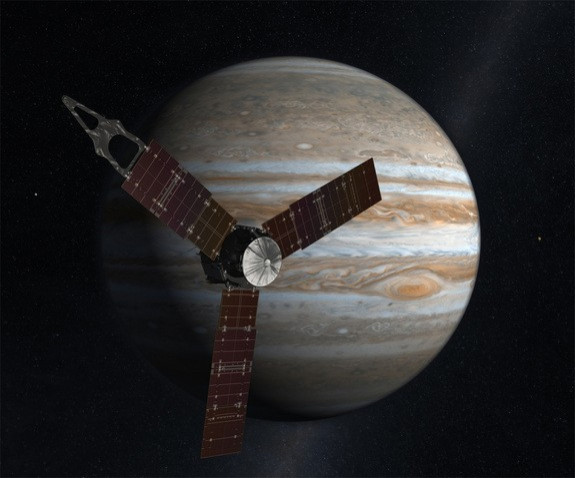Juno?s Next Stop: The Solar System?s Biggest Planet

Jupiter is the subject of NASA's latest scientific exploration with the launch of the unmanned craft Juno toward the solar system's biggest planet last week.
Juno, sent on its way Friday, already has sent communications back to mission control and deployed its solar array panels, which will power its five-year, 400-million-mile journey. Essentially, it's all systems go.
What is so interesting about Jupiter that warrants this lengthy, $1 billion mission? Perhaps, NASA says, the secrets of the solar system.
The space agency says Juno's principal goal of Juno is to understand the origin and evolution of Jupiter. The solar system's biggest planet may help astronomers understand the fundamental processes and conditions that governed the solar system's formation. As a gassy giant of the type found orbiting other stars, Jupiter also may yield critical knowledge for understanding other planetary systems.
"The special thing about Juno is we're really looking at one of the first steps, the earliest time in our solar system's history," Scott Bolton, principal investigator for the mission, said in a statement. "Right after the sun formed, what happened that allowed the planets to form, and why are the planets a slightly different composition than the sun?"
Bolton called Jupiter the "Rosetta Stone of our solar system." He said because it is the oldest planet, contains more material than all the other planets, asteroids and comets combined, carries the story of the solar system and secrets of the distant past.
Juno will also look at Jupiter's magnetic and gravity fields, revealing the planet's deep structure. The planet's magnetic field is the biggest and most intriguiging in the solar system.
To search the mysteries of the planet's magnetic field, Juno is equipped with two magnetometers that can measure the magnetic field of Jupiter's magnitude and direction with greater accuracy than any previous instrument. The two magnetometers stand about 6-1/2 feet apart on a boom fastened to the end of one of the three solar arrays.
The magnetometers will reveal the field for the first time in high definition. The instruments will be able to measure the magnetic field about 60 times per second while the entire spacecraft spins twice each minute
The mission also will explore Jupiter's magnetosphere near the planet's poles, where they form auroras like those seen on Earth. This will tie in with the studies of the magnetic fields effects om the Jovian atmosphere.
In Greek and Roman mythology, Jupiter, king of the gods, drew a veil of clouds around himself to hide his mischief. Only his wife, Juno, perceived his true nature. NASA is hoping Juno does the same for Jupiter.
Juno is set to orbit the planet for a year. It is the second leg of NASA's New Frontiers Program. The first was Pluto, which launched in 2006 and will reach the Pluto moon Charon in 2015.
"The future of exploration includes cutting-edge science like this to help us better understand our solar system and an ever-increasing array of challenging destinations," NASA Administrator Charles Bolden said.
Follow Gabriel Perna on Twitter at @GabrielSPerna
© Copyright IBTimes 2024. All rights reserved.




















